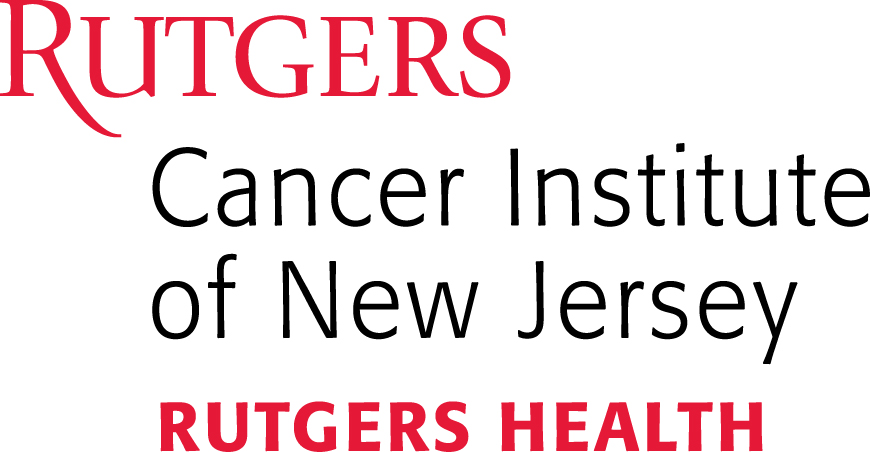***EMBARGOED UNTIL THURSDAY, JANUARY 3, 2019 AT 11:00 AM EASTERN***
Newswise — New Brunswick, N.J., January 3, 2019 – Research from Rutgers Cancer Institute of New Jersey shows improved overall survival at five years for pediatric patients with early-stage Hodgkin lymphoma when treated with chemotherapy followed by radiotherapy versus chemotherapy alone. The work, believed to be the largest retrospective study to date involving this population, is published in the January 3 online edition of JAMA Oncology (doi: 10.1001/jamaoncol.2018.5911).
There is no well-defined standard of care for pediatric patients with early-stage Hodgkin lymphoma. Current treatments include chemotherapy alone or chemotherapy followed by radiotherapy, known as combined modality therapy. This latter form of treatment is found to be manageable for this population but can result in toxic side effects. While both chemotherapy and radiotherapy alone are associated with increased risk of toxic effects, there has been an emphasis on reducing the number of chemotherapy cycles and potentially the need for radiotherapy for these patients. This use is decreasing, but the strategy remains controversial.
“Nationwide, there has been a notable decrease in combined modality therapy, especially in clinical trials, many of which are designed to avoid this strategy. This form of treatment has shown to be effective with event-free survival rates greater than 80 percent and overall survival rates greater than 95 percent. The question then becomes, ‘does treatment benefit outweigh the risk of long-term side effects?” notes Rutgers Cancer Institute radiation oncologist Rahul Parikh, MD, who is the director of the Laurie Proton Therapy Center at Robert Wood Johnson University Hospital, an RWJBarnabas Health facility, and senior author of the work. With that, investigators explored the use of combined modality therapy and its association with survival in this subset of patients.
Using data from the National Cancer Database, 5,657 pediatric patients (mean age 17.1) with stage 1 or stage 2 classic Hodgkin lymphoma were analyzed in this study. Most patients were white (82.9 percent) and female (53 percent). Male patients (48.1 percent) were more likely to receive combined modality therapy than female patients (43.6 percent). A little more than half of patients (50.3 percent) received radiotherapy following chemotherapy. The most common radiotherapy was photon therapy (59 percent). Median follow-up for the analyzed cohort was 5.1 years.
Analysis showed combined modality therapy was associated with improved overall survival at five years (97.3 percent), as compared to those who received chemotherapy alone (94.5 percent). The study also found that use of combined modality therapy was preferential in younger patients, male patients, those with stage 2 disease, and those with favorable insurance. Adolescent and young adult patients had the most impressive benefit with combined modality therapy versus chemotherapy alone. Conversely, the youngest patients (aged one to 13 years) appeared to benefit the least from this combined form of treatment – an important finding, say the authors, as they represent the group most vulnerable to the adverse effects of numerous cycles of chemotherapy and/or radiotherapy.
“This study demonstrates improvement in survival benefit for pediatric Hodgkin lymphoma patients. With that, physicians should be encouraged to discuss combined modality therapy as one of the many treatment options with them at the time of diagnosis,” adds Dr. Parikh, who is also an associate professor of radiation oncology at Rutgers Robert Wood Johnson Medical School. “Investigators may also consider designing future clinical trials for this population to include combined modality therapy as a standard arm with the inclusion of interim treatment response assessment (PET scans, etc.). And as multiple disparities to the use of combined modality therapy have been identified through this work, future studies should address improving access to care for all pediatric patients.”
The authors note there were study limitations including the inability to control for unreported prognostic factors – such as presence of systemic symptoms, number of nodal sites and bulk of disease – because the data set lacked this information. They also note the limited follow-up of the study (median, 5.1 years) likely does not capture secondary late effects associated with combined modality therapy and its potential effect on survival.
Along with Parikh, other investigators on the work are Sachin R. Jhawar, MD, Rutgers Cancer Institute and Rutgers Robert Wood Johnson Medical School; Zorimar Rivera-Nunez, PhD, Rutgers Cancer Institute and Rutgers School of Public Health; Richard Drachtman, MD and Peter D. Cole, MD, both Rutgers Cancer Institute and Rutgers Robert Wood Johnson Medical School; and Bradford S. Hoppe, MD, MPH, University of Florida, Gainesville.
Additional details including information on conflicts of interest can be found at: doi: 10.1001/jamaoncol.2018.5911.
About Rutgers Cancer Institute of New Jersey
As New Jersey’s only National Cancer Institute-designated Comprehensive Cancer Center, Rutgers Cancer Institute, along with its partner RWJBarnabas Health, offers the most advanced cancer treatment options including bone marrow transplantation, proton therapy and CAR-T cell therapy. Along with clinical trials and novel therapeutics such as precision medicine and immunotherapy – many of which are not widely available – patients have access to these cutting-edge therapies at Rutgers Cancer Institute of New Jersey in New Brunswick, Rutgers Cancer Institute of New Jersey at University Hospital in Newark, as well as through RWJBarnabas Health facilities.
Along with world-class treatment, which is often fueled by on-site research conducted in Rutgers Cancer Institute laboratories, patients and their families also can seek cancer preventative services and education resources throughout the Rutgers Cancer Institute and RWJBarnabas Health footprint statewide. To make a tax-deductible gift to support the Cancer Institute of New Jersey, call 848-932-8013 or visit www.cinj.org/giving.
###
